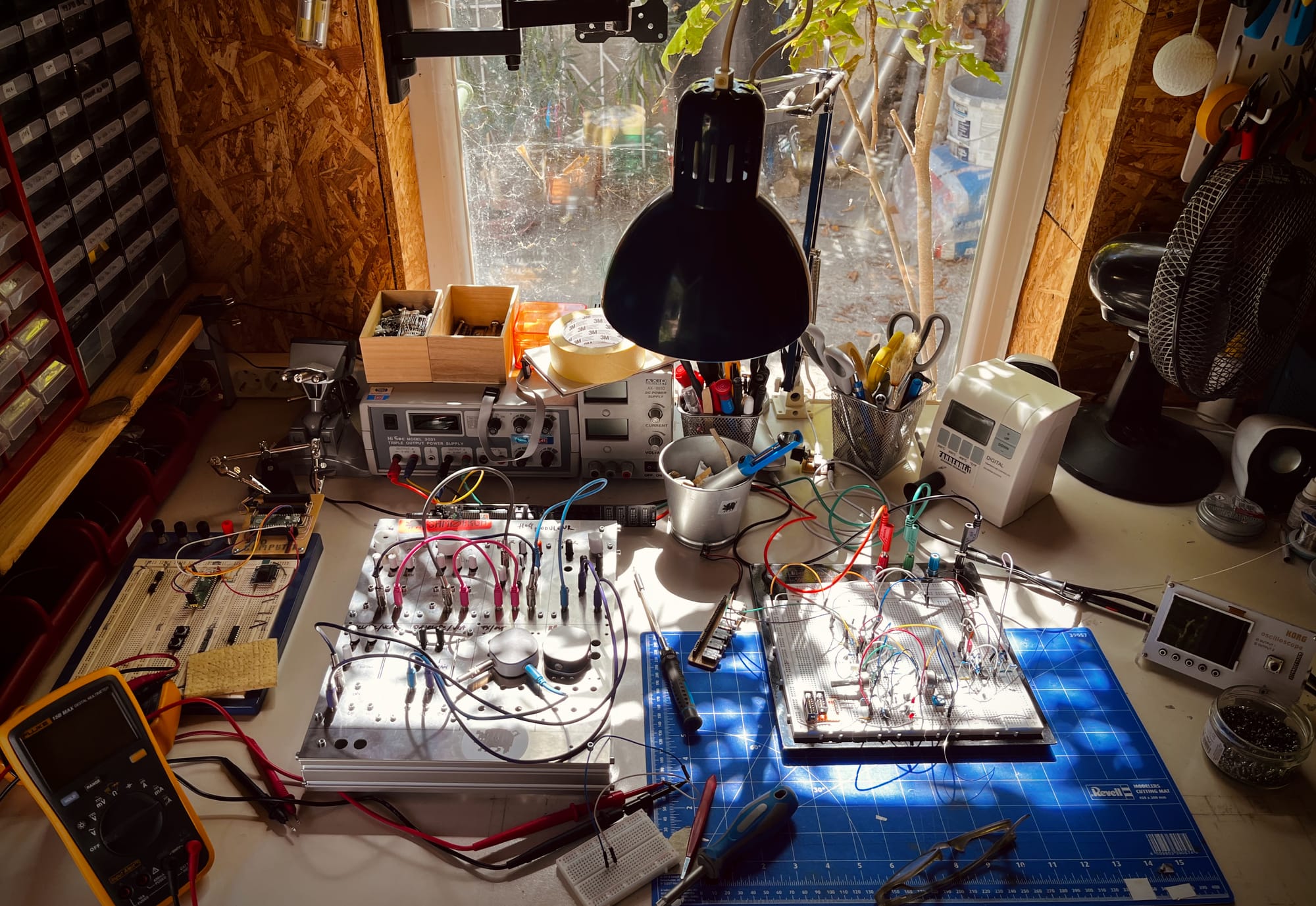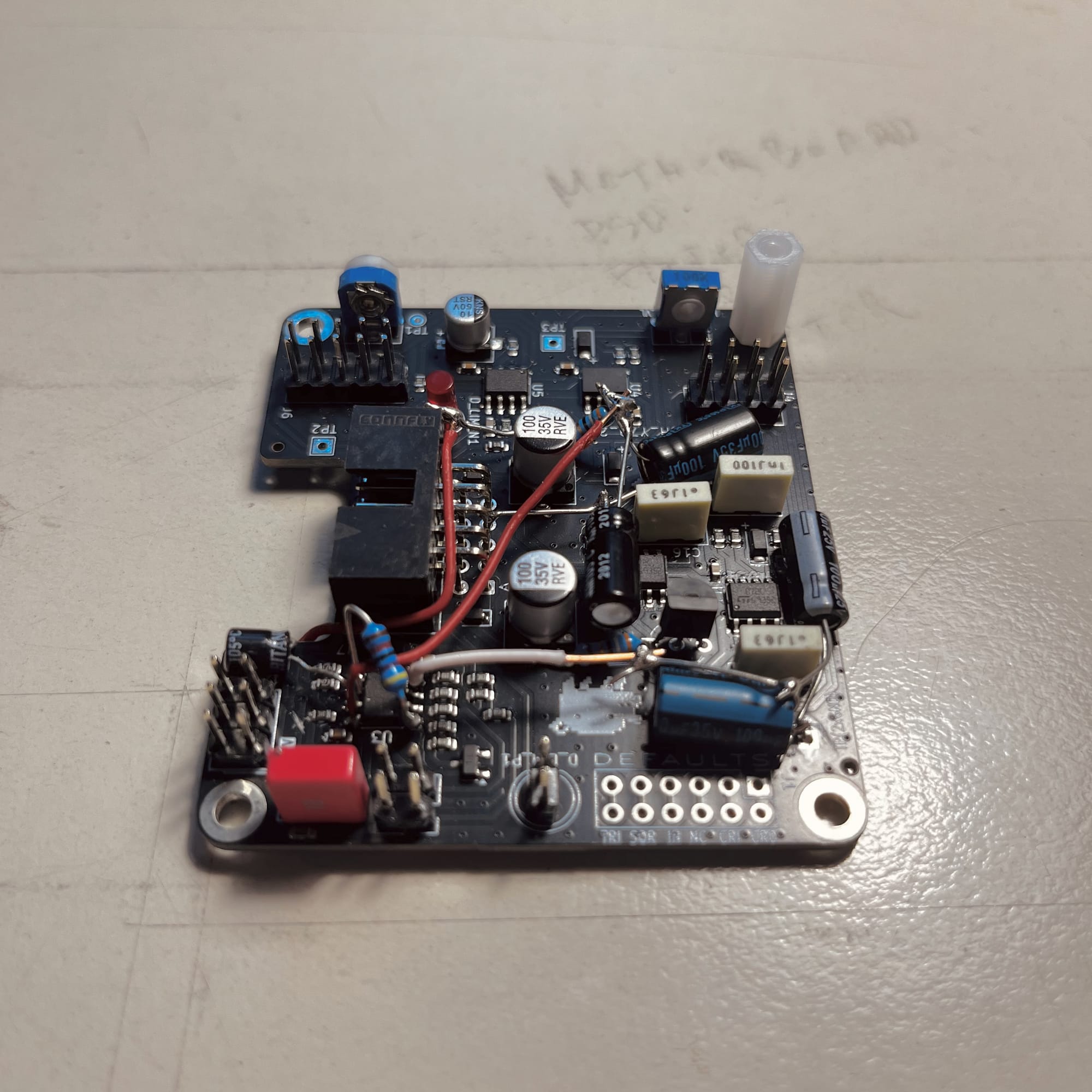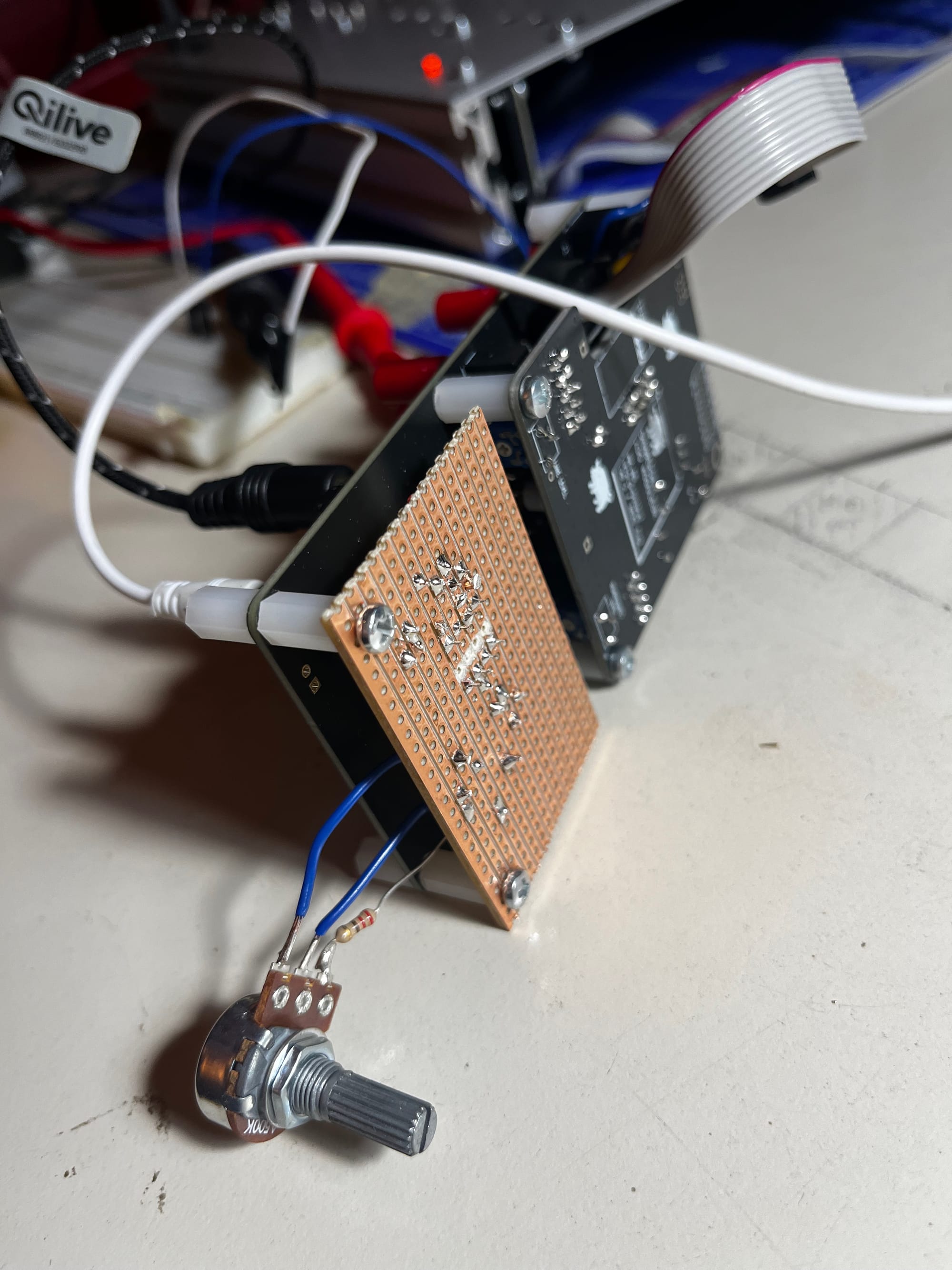Power tremolo

It’s Saturday morning. Coffee in hand, I head to the hovel (Hungarian: kulipintyó—try saying it) with one simple goal: finish the LFO and finally close the analog part of the Moduleur. Child’s play… right? Not so fast, silly bwoy.
Within an hour, the last resistor is in. This PCB hosts three things:
- a mysterious analog effect (let's keep that a secret for now)
- an output stage that tames the final signal to line level so it doesn’t roast your beautiful OP-XY
- and the LFO.
This little fucker. You’d think a six-component circuit would be easy, but the LFO turned out to be the most annoying part of the whole system. It made us literally butcher the PCB and burned an entire weekend to debug.
When the LFO moves the whole rig
LFOs can cause small, unexpected amplitude modulation on the power rails of the system. In our case, they managed to modulate everything so the volume of any module's audio output started to pulse with the LFO's frequency whenever they shared the same power rail. (Power the LFO from a different PSU and the tremolo disappears. Proof.)
So why is this? Inside every analog LFO there’s a cap charging and discharging through a resistor. Each time the LFO switches polarity, current flow flips direction, creating short bursts of load on the PSU. Those drops ripple through the system, and voilà: a beautiful, totally unwanted tremolo. Freakin’ annoying.
How to solve it? First step, as any good engineer knows: panic.
Second step: dump all of it on poor Flame. He’s the calm voice in the chaos and my co-troubleshooter in crime.
Then comes the madness. Oversized decoupling caps. Low pass filters on the LFO power rails using capacitance multipliers (TIL) for super low cutoff frequency, all built on top of SMD parts like there's no tomorrow. Although it looks messy it’s not random — there’s method in the madness — but it’s mostly intuition.


After two days of this circus, we cracked it.
We ditched the old circuit, built a new LFO with a smaller cap, and powered the LED between +12V and –12V instead of +12V and GND. That balanced the current flow — no more pulsing, no more unwanted tremolo. Just calm, steady wobble ready to drive auto-wah, vibrato, or PWM.
Hardware bugs are scary as fuck. You can’t ship a hotfix. Debugging involves physics ("umm... why do I hear radio if I touch this wire?"), experimenting with solutions on SMD components feels like building a "hospital for ants", and the turnaround time of PCBs or enclosures can be weeks. So you can imagine how we feel when we find a hardware bug.

But dude when it finally works? Instant zen. The world is a great place again. Thank you!

So our fellow nerds: if your synth ever starts to wobble when it shouldn’t — check the power supply first. Learned that one the hard way.
Next up
We just gave the first full Hog Moduleur prototype to our first tester. He's going to try to break it. That means we’re getting close, and we’re stupid-excited.